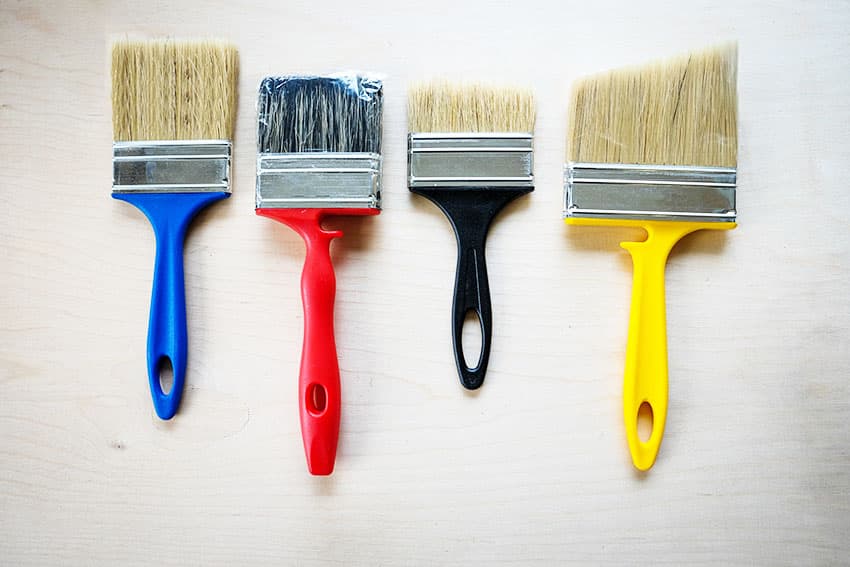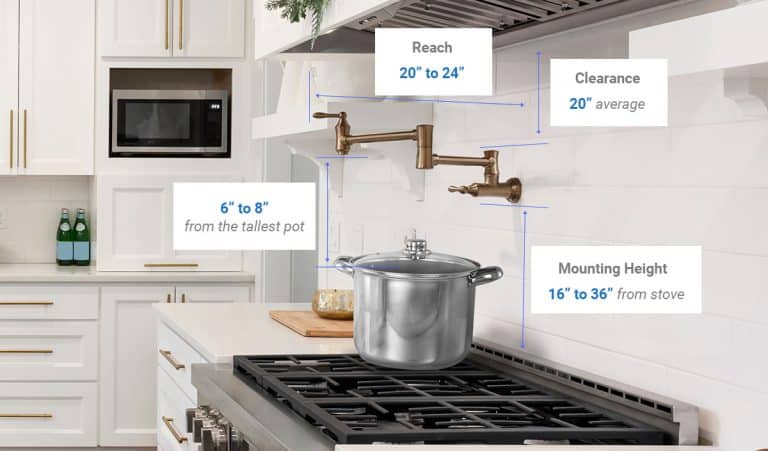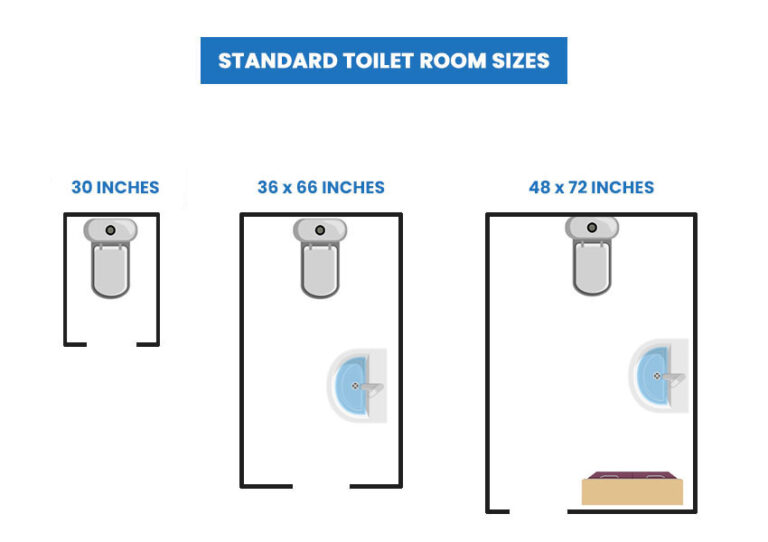Paint Brush Sizes (Styles & Uses)
Here’s our paint brush sizes guide including the different styles, uses, brush size chart, and how to choose the right paint brush for your project.

The number many homeowners might notice on their brushes does not refer to the size of the brushes but is a numbering system to organize the scope of sizes of paint brushes.
This numbering system is not standard by all means since one manufacturer to the other can vary in the numbering for specific paint brushes. A paint brush labeled “7” may look different from another brush labeled “7”; this is why it’s essential to go beyond brush size numbers.
Standard Straight Edge Brush Sizes (2″ to 2 1/2″)

The standard straight edge paint brushes are the most versatile and popular since they can be utilized for an array of projects in home construction or renovation. Typically, they are available in sizes from 2 to 2 1/2 inches or around 5 to 6 centimeters.
A straight edge paint brush is ideal for painting baseboards and cabinets. With the brushes’ straight edges, it will be easy to paint even the most detailed kitchen counters.
These brushes are also great for painting furniture, the bigger ones. Moldings, railings, shutters, gutters, or any more extensive needs outside the home can also be painted easily using this paint brush size.
Getting a straight edge paint brush with natural bristles is the most advisable thing to do when the paint is latex or acrylic, while synthetic brushes are great for water-based paint.
Large Straight Edge Brush Sizes (3″ to 4″)
Larger paint brushes will hold more paint which means that they can cover larger surfaces and areas to finish a paint job easier and quicker. Most larger paint brushes used for this purpose are around 3 to 4 inches or about 8 to 10 centimeters. With their bigger size come more extensive uses.
Larger paint brushes are used for the more enormous home construction or improvement projects. They can be used to paint the exterior siding of a home and paint overall decks or terraces, or gazebos. They are also ideal for painting doors and walls, and because of their size, this brush has the ability to leave fewer streak marks which is suitable for a wall painting look when dried up.
A three to four inch paint brush is also the most ubiquitous, which means that even tiny hardware stores will have it, and typically these are also the most affordable brushes homeowners will find.
Standard Angled Brush Sizes (2″ to 2 1/2″)
An angled brush is commonly referred to as a cutting brush because of its effortless ability to “cut in” on any corner or area around walls and other construction like cabinets or moldings.
Any homeowner will notice how the bristles of an angled brush are cut at a slant to make it easier for any painter, expert or not, to have nice and clean lines when painting.
An angled brush is what homeowners are looking for if they need a brush to get into grooves like doors with panels or kitchen cabinet fronts. An angled brush is also ideal for small spaces like door trims or between windows.
Typically, the regular angled brushes used for these purposes are sized at the standard 2 to 2 1/2 inches or around 5 to 6 centimeters. If homeowners are looking to paint more detailed works, it is best to go for angled instead of straight edge paint brushes.
Small Angled Brush Sizes (1″ to 1 1/2″)
If control and preciseness are what a homeowner is looking for when choosing a paint brush, they will get a lot of use from small angled brushes.
Although these brushes are not ideal for covering a lot of surface area in a short time, they are the best to use when it comes to detail work and other small-scale painting jobs. A rule of thumb is to look for a long handle to keep the brush profile narrow, so slipping it on smaller spaces and crannies will be easier.
A small angled brush is often 1 to 1 1/2 inches or around 3 to 4 centimeters. These brushes will make it easier for homeowners to paint hard-to-reach crevices like window mullions or cabinet corners. This size is also best for art and crafts or adding minute details to intricate pieces of furniture, whether varnishing or painting.
Paint Brush Sizes Chart
Here is a cheat sheet to make looking for the perfect brush size for a specific project easier.
| Paint Brush Name | Paint Brush Size (Inches and Centimeters) | Most Advisable Uses and Surfaces for Specific Paint Brush |
| Standard Straight Edge Paint Brush | 2 to 2 ½ inches (5.08 to 6.35 centimeters) | used to paint gutters, shutters, railings, stairs, pieces of furniture, cabinets, and baseboards |
| Large Straight Edge Paint Brush | 3 to 4 inches (7.62 to 10.16 centimeters) | used to paint doors, ceilings, walls, masonry, fences, decks, and other exterior sidings |
| Standard Angled Paint Brush | 2 to 2 ½ inches (5.08 to 6.35 centimeters) | used to paint window frames, moldings, casings, and specific detail work like cutting-in edges of ceilings and walls |
| Small Angled Paint Brush | 1 to 1 ½ inches (2.54 to 3.81 centimeters) | used for crafts and hobbies, window mullions, tight corners, and other specific areas needing more detailed works |
What Is The Best General Purpose Paint Brush Size?

When looking for the perfect 2 to 2 1/2 inches straight edge paint brush, it is best to look for one with softer tips. Although stiffer bristles will provide longevity to the paint brush, a harder bristle can leave behind imperfections like streaks or leftover strands, which will decrease when softer paint bristles are utilized.
Other than the straight edge, angled sash brushes are also there, with the main difference being their slant edges which will give greater flexibility for detailed works.
How To Choose The Right Paintbrush

The first thing to ensure is to match the brushes bristle with the paint finish. If the varnish or paint to be used can be cleaned up with water, opting for synthetic is the way, while natural bristles are best for oil-based paint or varnish.
The last is getting the right size which is easy to determine using the chart above. For more detailed works, go shorter on the bristle profile at 1 to 1 1/2. On the other hand, homeowners will appreciate the cut time more oversized bristles will provide at 3 to 4 inches.
It can be tempting to buy inexpensive brushes, but splurging on a higher quality brush will provide better results from a smoother finish, not to mention the fact they can easily be cleaned, which will mean longer shelf life to be used for another project.
Flat & Straight Edge Brushes
A flat and a straight edge paint brush are the same things, and they are characterized by their square end and the fact that they have medium to long hairs.
These brushes are great for precise edges, whether they are on the smaller 1 to 1 1/2 inches variety or the bigger 3 to 4 inches brushes. These brushes are thinner, making them easy to flip to use the paint on the other side.
Getting a flat or straight edge brush is also great for bigger projects that won’t require detailed work like painting walls or sidings or even more oversized outdoor furniture items like picnic chairs and tables. Flat or straight edge brushes are also great for use when varnishing wooden furniture is concerned.
What Size Paint Brush For Trim?

For the size, opt for a brush that is 2 inches in width. This brush size is not too big or not too small, which is excellent for avoiding mistakes and being able to cover it in no time.
Visit our paint can sizes guide for more related content.






